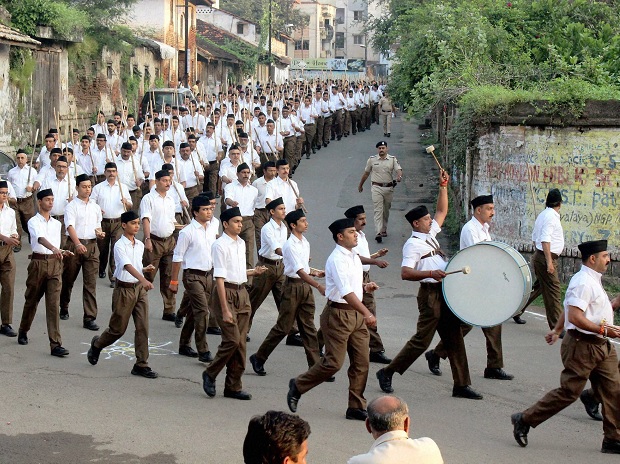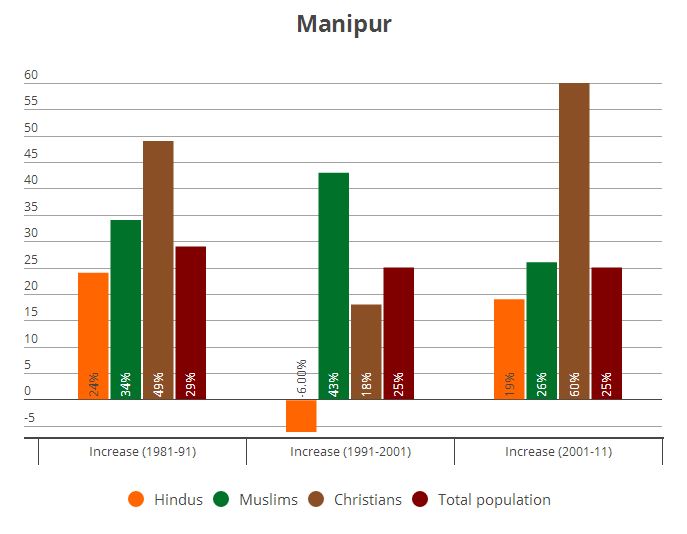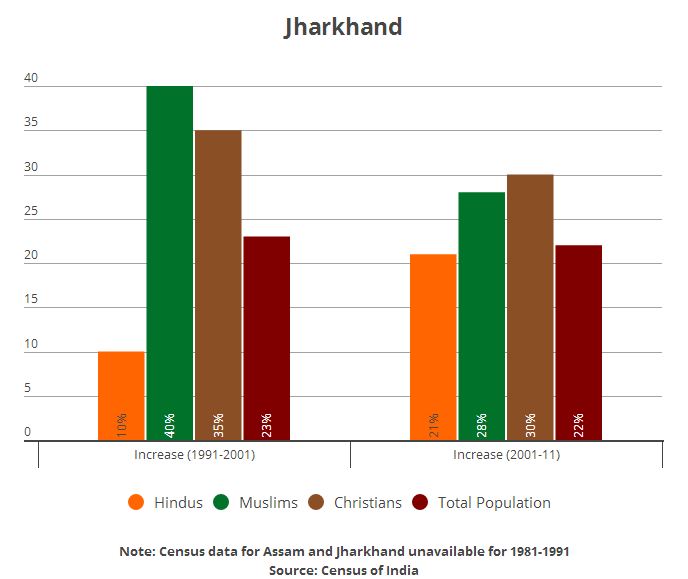 Manipur’s population rose 24% while Christian population increased by 60% in 2001-2011.
Manipur’s population rose 24% while Christian population increased by 60% in 2001-2011.
After the Bharatiya Janata Party (BJP) ruled Jharkhand drafted an anti-conversion bill, some other states in the North-East where the BJP has comfortable majorities to ensure their passage and pliable governments to oversee their implementation may follow suit.
The Rashtriya Swayamsevak Sangh (RSS) had in the past flagged issues regarding coercive conversions in Manipur and Assam. A senior RSS functionary based in Nagpur said, “Forcible religious conversion cannot be tolerated wherever it is happening in the country. More efforts need to made in this direction and we will continue to do what we have been doing in the past. The Jharkhand government’s anti-conversion bill is a step in the right direction.”
The RSS fears regarding Manipur in particular stem from ground reports sent by its functionaries in addition to the rise in population of other religions in the state in comparison to Hindus. More specifically, there seems to be an air of concern regarding the growth of Christian population in Manipur. The Christian population in Manipur has increased by 60% since the dawn of this century. The Muslim population in the state has grown by almost 30% since 2001. In comparison, the growth rate of Hindus has been around 19% in the state.
The growth rate of the Christian population in Manipur seems to have accelerated since the beginning of the 21st century. Between 1991-2001, the growth of Christian population in the state was 18%. This was slower than the previous decade. In 1981-1991, the Christian population in the state had risen 49%.
The growth of Manipur’s population in 2001-11 was 24.5% while the Christian population the state ballooned by 60% during the same period. This has given Hindutva outfits the ammunition to whip up passions by claiming that large scale proselytisation is underway in Manipur.
A similar situation seems to be unfolding in Assam where communal tensions between the indigenous Ahoms and Bangladeshi Muslim immigrants have been a recurring feature over the decades. Even in Assam, the Christian population has grown by 18% since 2001. The Hindu population has grown 11% since the dawn of this century. Meanwhile, Muslims in Assam have grown by almost 30% during the same period. Hindus have also shown a disproportionally lower growth of males vis-à-vis females in the state.
WHAT MAKES HINDUTVA’S SOLDIERS ANGRY?


 While the male Hindu population grew by 9%, the female Hindu population has grown by 12% during the same period. But the growth rate of Muslim males during the same period has been almost 28% meanwhile Christian males have grown by almost 17% in the state. Ultra-right wing institutions have in the past played on fears of the people by exhorting this disproportionate growth of Muslim and Christian male populations vis-a-vis the Hindu female population.
While the male Hindu population grew by 9%, the female Hindu population has grown by 12% during the same period. But the growth rate of Muslim males during the same period has been almost 28% meanwhile Christian males have grown by almost 17% in the state. Ultra-right wing institutions have in the past played on fears of the people by exhorting this disproportionate growth of Muslim and Christian male populations vis-a-vis the Hindu female population.
Hindutva outfits also seem to be targeting these states because minorities constitute a significant proportion of the population in these states. For instance, Muslims constitute almost 34% of the state’s population. Hindus and Christians in Manipur are equal in numbers when it comes to Manipur (41% of the population).
While RSS mandarins are happy with the Jharkhand Freedom of Religion 2017 Bill, making it a model bill for framing of similar legislations in Manipur and Assam might open a can of worms. The Jharkhand anti-conversion bill defines conversion by force to include the threat of injury of any kind including “divine displeasure or social ex-communication.” Given that occult practices and superstition is rife in these states, the state administration could get sweeping powers to consider many forms of religious practice as forced conversion.
If the Jharkhand assembly passes the bill, it would be the sixth state to have such a law. At present Chhatisgarh, Madhya Pradesh, Odisha, Gujarat and Himachal Pradesh have similar legislations to prevent forced conversions in their respective states.
Article 25 of the Indian Constitution allows any person to “freely practice, profess and propagate any religion.” This, of course, is subject to “public order, morality, and health.” It is on these caveats in the Constitution that BJP governments are looking to enact anti-conversion laws. The question is whether such laws would also be used to clamp down on militant Hindu organizations who take law and order into their own hands in the name of “ghar wapsi” or it would become an instrument to stem the growth of India’s burgeoning minority population?
Source: Business Standard


